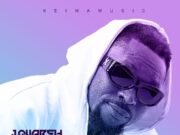Many of us have ever had back pain which may have lasted a few days or weeks, or continued for many months or years.
Back pain is a muscle and bone disorder. Your Back pain can have an effect on your mood, sleep patterns, daily activities and your ability to work.
The condition most often affects individuals in their middle age and upwards – more than 30 years old. Sometimes it’s difficult to point out the exact cause of the back pain. It could be due to a strained muscle or damage to other structures in your back.
Your back is connected to other parts of your body and your spine supports your back. Your spine is made up of four sections, your neck, your mid back, your lower back and the end aspect of your spine.
Your spine consists of small separate bones called vertebrae. In-between the vertebrae are discs/cushions which act as shock absorbers. Your spinal cord passes through the middle of the vertebrae.
Muscles and other structures surround the spine to provide support and stability, and to assist movement.
Muscle weakness
Your deep abdominal muscles play a vital role in maintaining your back and therefore when they are weak it may cause an increased strain on the back.
Disc problems
Discs are found in-between the small bones of the back. They wear down with age and may bulge out.
Inappropriate posture
When you adopt poor posture in sitting, standing for a prolonged period and whilst lifting objects you place a lot of stress on your spine. Maintaining poor posture at work or at home or during your daily activities place need to avoided.
Your muscles may become over-stretched or tight, your joints and nerves are also put under pressure hence causing pain in your back.
Structural changes
As you grow older, a lot of changes occur in the bones in your back. In younger individuals, their bodies naturally keep the backbone, the cushions in between the backbones and muscles in good form so that they can stand up to the stress and strain placed on them.
However, as you get older, parts of your body also begin to age, which leads to a deterioration in the structure and function of the backbones, the cushions in-between them and the muscles of your back.
Ligament sprains
Ligaments are the tough cords or bands that limit the amount of movement present at each vertebrae.
They also join bones together and provide support for the back and therefore when they are stretched too much they may be injured and unable to provide the needed support.
Obesity
When an individual is overweight or obese it implies that there is excess load/ weight placed on the joints in the backbone and waist which may lead to back pain.
What are symptoms of back muscle pain?
The symptoms of back pain frequently develop slowly over time or you may experience it suddenly. It may also vary with your level of activity and weather influences.
The symptoms of back muscle pain may range from a mild pain to severe back pain.
These include:
• Localised pain in the back, with no pain in the leg.
• Back stiffness causing limitation in movements like difficulty in bending to pick objects from the ground.
• Loss of sensation or abnormal sensations in the legs
• Weakness in the legs
• Loss of balance
• Difficulty in walking
• Shooting pains that travel down the legs
How is back muscle pain diagnosed?
Examination of individuals begins with an accurate history and thorough physical exam with appropriate tests conducted to confirm the presence of the condition.
Radiographic studies, whether plain film (X-ray), CT, or MRI, may provide useful confirmatory evidence to support an exam finding and also localise an area of nerve compression.
• X-rays may reveal the presence of bone spurs/ outgrowths.
• A Computed Tomography (CT) scan can provide a more detailed, cross-sectional image.
• Magnetic Resonance Imaging (MRI) provides the most detailed images because it can show the degree of degeneration of the back bones and joints, and also whether the discs or nerve structures are affected.
The Writer is a Senior Physiotherapist at the 37 Military Hospital
(panierus@live.com)
a


























